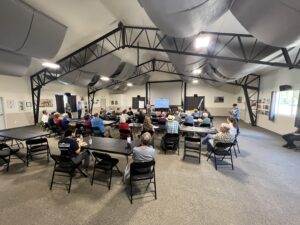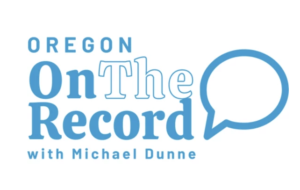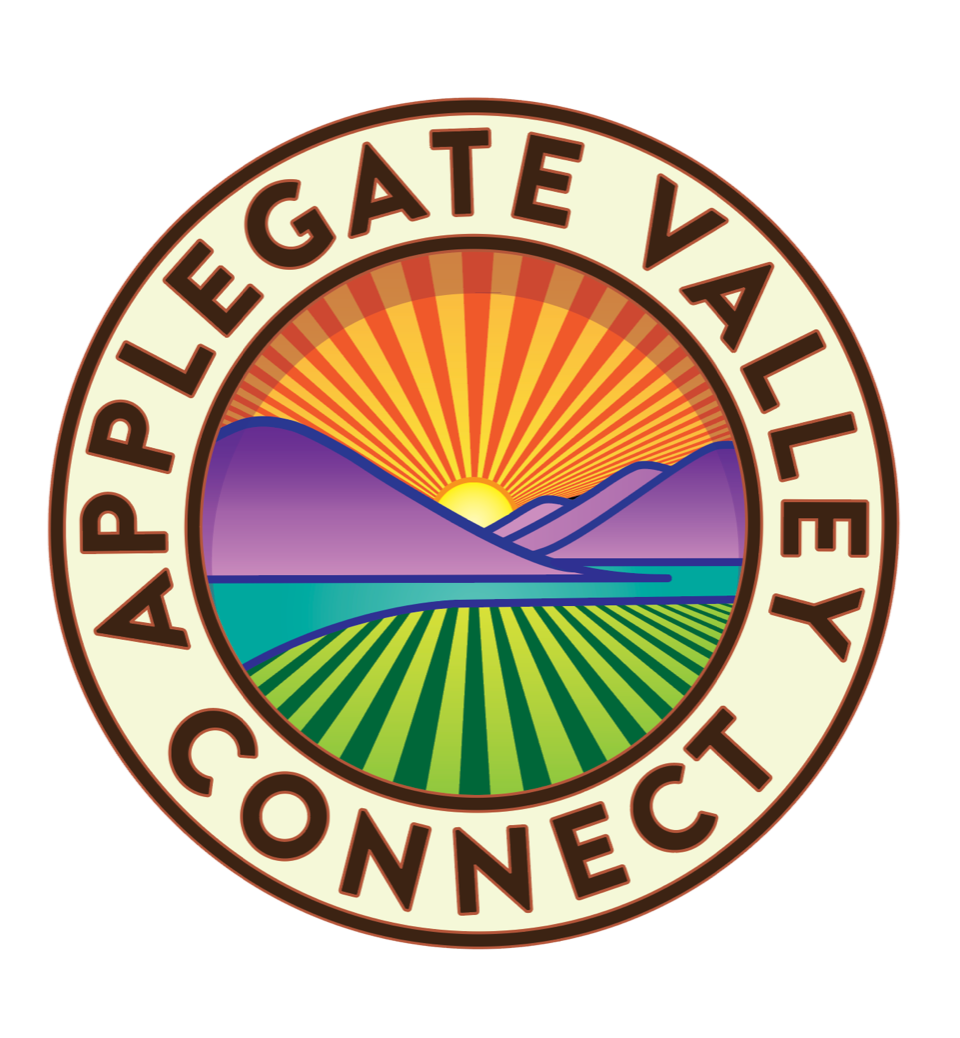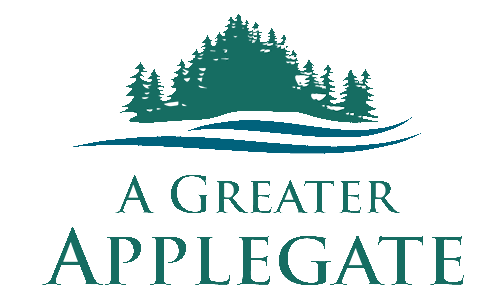“…success in Oregon’s rural communities literally depends on reliable broadband access.”-Senator Ron Wyden

What is the cost of having poor Internet access in the Applegate? One resident had to shut her business down because she couldn’t reliably secure supplies online; another had to complete his taxes at a neighbor’s house after his Internet dropped for 11 days. A local farmer was unable to reliably do payroll because there wasn’t enough bandwidth to run QuickBooks. Yet another gave up on trying to sort out a complicated health insurance issue because the calls kept dropping.
These are just a few of the experiences shared by the dozens of community members who showed up for the Broadband Listening Session at Applegate Fire District Office #9 on May 26th. The consequences of poor Internet access on health, business and education were enough that they were willing to sacrifice a gorgeous Friday afternoon to show up and be heard.
RELIABLE ACCESS FOR ALL

Ziggy Rivkin-Fish gave the audience an overview of Internet infrastructure. He is the Vice-President for Broadband Strategy for the Oregon Broadband Office.
The Listening Session was sponsored by the Oregon Broadband Office and was the first step in implementing The Bipartisan Infrastructure Bill that the federal government passed in late 2021. Part of that bill aims to expand Internet-access into underserved areas. For the funds to be released, the State of Oregon must conduct listening sessions to collect “on-the-ground” reports about the current Internet user experience. The session in Ruch was one of twelve conducted throughout the state.
Daniel Holbrook, the State’s Broadband Manager, opened the meeting, thanking everyone for their attendance, especially Representative Pam Marsh who he praised as a “broadband champion for the State.”

KLCC’s On the Record recently did a show on rural broadband. The show includes Ruch Outdoor School President, Julie Barry, former A Greater Applegate Director Seth Kaplan, and Senator Ron Wyden. See link at the bottom of the article.
Before diving into the listening portion of the meeting, Ziggy Rivkin-Fish, Vice-President for Broadband Strategy, gave a broad overview of the Internet’s physical infrastructure. He used a diagram to show how the major long-haul cables linked to intermediary cables and then branched into the last miles of wire. It’s a network comparable to a road system: Wide, fast-running freeways lead to city roads–which eventually lead to unpaved, slow bumpy roads. The problem with rural infrastructure lies in those last miles.
He also stated “Digital Equity,” as major priority of the Bill. This is defined as all users accessing the Internet affordably and reliably and having access to tech support, privacy and security, and well as education.
APPLEGATE RESIDENTS WEIGH IN
After his overview, the attendees split into smaller groups to answer and discuss questions like: Do you have access to the Internet? Do you have a cell signal? Does it meet your needs? Does everyone have a device?
It was clear from the resident’s personal stories that Internet access so spotty, slow and unreliable that it was impacting their ability to carry out day-to-day tasks.
“You can’t run a small business if you can’t actually be doing the basic functions of your business since everything is on the Internet now,” said Megan Fehrman. Fehrman is the co-Executive Director of A Greater Applegate, a local community building organization that, among other things, advocates for better Internet access.
Applegate resident, Norm Young, was also at the meeting. He has run Applegate Broadband for 23 years. His business—wireless broadband– was the bridging technology between dial up Internet and fiber to the home. He explained that wireless broadband is technologically limited compared to fiber optic, which is the “gold standard” for Internet service.
“I’m glad to see the federal government getting involved in bringing fiber to the home in the rural areas,” he said, “Like the Rural Electrification Act, and the Universal Service Fund for telephone service before it, some sort of subsidy for communications infrastructure is required.”
He applauded OBO’s efforts to get community input, though differs on some points. He thinks satellite would be the most cost-effective for covering those last, end-of-the-road properties. He also prefers an emphasis on building fiber infrastructure versus training and devices. And last, he would have liked to have seen even more people attend the meeting and weigh in on their Internet experiences. He mentioned the idea an online survey.
But, of course, that would have required reliable Internet.
To listen to KLCC’s On the Record show about rural broadband, click here.
RESOURCES:
RASCAL: Over 50-years old and need technical assistance? Contact the Rogue Area Senior Computer Assistance League for class schedules and discussion groups
AFFORDABLE CONNECTIVITY PROGRAM: Struggling to afford broadband? Apply for Federal assistance.
OREGON LIFELINE PROGRAM: This federal and state government program provides a monthly discount on phone and broadband service for qualifying low-income Oregon households.
BROADBAND PROJECT TIMELINE.
Thoughts to share? We’d love to hear from you directly! Please email: info@agreaterapplegate.org


